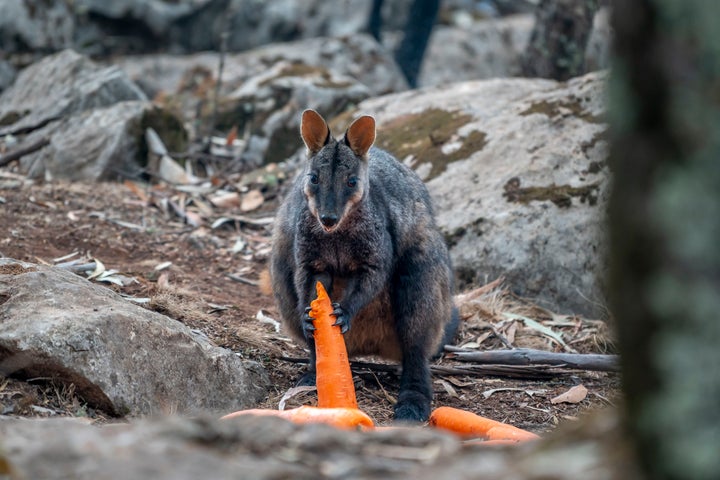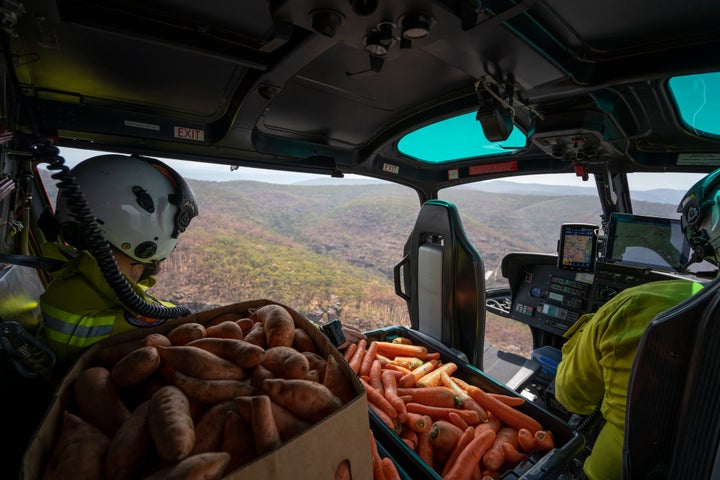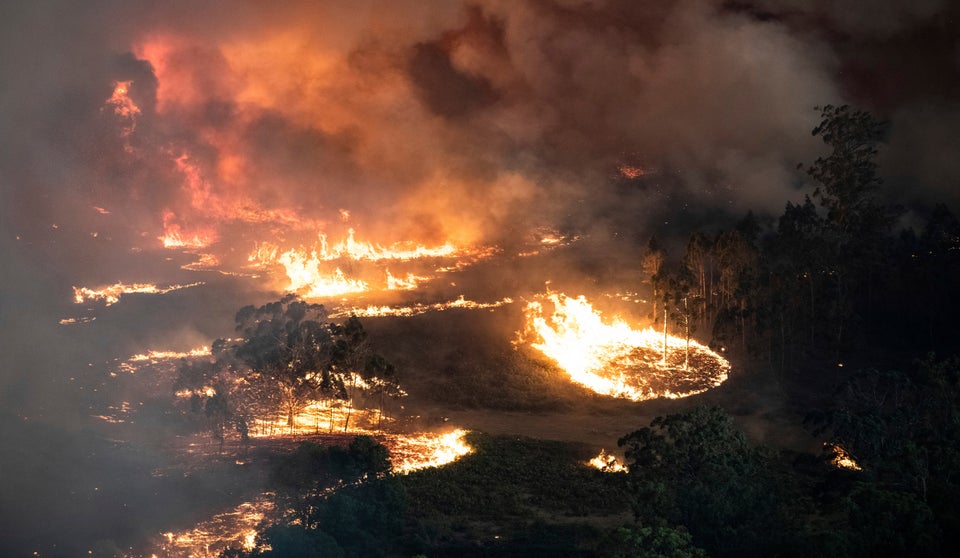It’s raining sweet potatoes and carrots in Australia’s bushfire-ravaged state of New South Wales.
In a bid to save the endangered brush-tailed rock-wallaby, the NSW state government arranged a drop of thousands of pounds of vegetables to fire-affected areas last week. The drop was part of a major post-fire wildlife recovery effort being carried out statewide.
State Environment Minister Matt Kean said in a statement that the provision of food for the wallabies was one of the key strategies employed to promote the survival and recovery of species affected by the blazes.
“Initial fire assessments indicate the habitat of several important Brush-tailed Rock-wallaby populations was burnt in the recent bushfires. The wallabies typically survive the fire itself, but are then left stranded with limited natural food as the fire takes out the vegetation around their rocky habitat,” Kean said.
“The wallabies were already under stress from the ongoing drought, making survival challenging for the wallabies without assistance.”

According to a government media release, almost 2,000 kilograms (or about 4,400 pounds) of sweet potatoes and carrots were dropped to 11 different brush-tailed rock-wallaby colonies. These drops will continue, and be accompanied by feral predator control, as the species recovers.

“At this stage, we expect to continue providing supplementary food to rock-wallaby populations until sufficient natural food resources and water become available again in the landscape, during post-fire recovery.”
University of Sydney ecology professor Chris Dickman estimates that more than 1 billion animals have been killed by the wildfires either directly or indirectly. Animals that survive the blaze itself by fleeing or going underground will re-emerge into areas lacking the resources to support them or may fall victim to feral predators, he said.
Recovery efforts to save animals in wildfire-hit areas are underway across Australia, including on the biodiverse Kangaroo Island off the South Australian coast, where tens of thousands of koalas have been killed and several other unique species have been severely impacted. The South Australian government and Nature Foundation SA are coordinating to fundraise and re-establish habitat for wildlife.
There were still more than a hundred fires burning across NSW on Sunday, although none at emergency level. Forecasts for the week ahead include rain and conditions set to provide relief for emergency responders.
A firefighter died over the weekend battling a blaze in Victoria, bringing the total death toll from the bushfires to 27. The NSW Rural Fire Service confirmed Sunday that more than 2,000 homes had been destroyed this fire season.
You can support organizations saving wildlife by donating to the Nature Foundation’s Wildlife Recovery Fund, WWF Australia, NSW-based animal rescue group Wildlife Information Rescue and Education Service (WIRES), Zoos Victoria’s bushfire emergency wildlife fund, Australia Zoo’s Wildlife Hospital, or Port Macquarie Koala Hospital.


